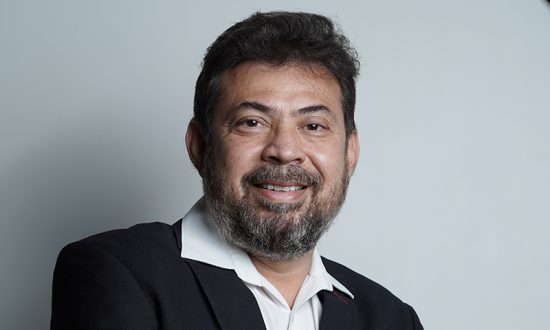Shalin Sheth, Managing Director and Founder, is a Mechanical Engineer and an MBA degree holder. He has been working in the power field for over 23 years. He vows to cater safe and sustainable solutions for power and telecommunications industry in India. Apart from his entrepreneurial expertise, Shalin Sheth holds a deep interest in Vedic civilisation, yoga and philosophy.
India with a transmission/distribution network of approx. 109 lakh ckt km that covers every nook and corner, is all set to add more 27,000 circuit kilometres of inter-state power transmission networks by 2024 out of which 6,500 circuit kilometres i.e almost one-fourth of the target is already covered. In order to execute such a grand plan, the nation would need to build transmission lines that can evacuate 180GW generation capacity, which will eventually take the nation to its goal of having 500GW of renewable energy by 2030. However, the grand plan has its downside too, the expansion is putting the Indian power utilities under immense pressure and making the prices of energy trading slump massively.
Hence, the development of smart power utilities that can ease the burgeoning demands from today’s power infrastructures is the need of the hour. That’s where utilities like Optical Fiber Ground Wire (OPGW) step in and alleviate the headaches of the power supply chain. OPGW is a groundbreaking solution that combines fast optical fiber-based SCADA networks with effective power distribution grids and gives power utility companies the distinctive powers of a telecom carrier or service provider.
OPGW is a dual functioning cable, along with replacing traditional conductors and “shielding” them from lightning while providing a telecommunications path for internal as well as third party communications, they also withstand the mechanical stresses by providing a path to the ground without damaging the sensitive optical fibers inside the cable. Its main features contain tensile strength, optimum balance of mechanical and electrical performance, high quality of transmission, communication and reliability and adaptability for optical cable communication systems.
Mitigating the challenges and bringing resistance to the power supply chain
For the replacement of old earth wires in transmission lines, live line installations of OPGW wires are crucial. In the live condition of the transmission line, the earth wires are replaced with OPGW Cables which helps to provide better communication with the earthing of the transmission tower. It is one of the fastest and safest live line installation “carrier method”, particularly for 132 kV & above lines that consist of a self-propelled carrier, special Nylon ropes & double pulleys and the average productivity of cable installation is 60 km/month per team.
Here’s how OPGW wires are providing advantages over conventional methods:
- With its relatively low cost solution telecom service providers can provide uninterrupted mobile/Internet services to the people.
- It can provide a plug and play network to telcos, thereby reducing their time-to-market as well as saving costs on account of securing RoWs.
- Strengthens grid infrastructure and operations as the cable is well protected by strong steel and aluminium conductors.
- Requires no digging, trenching, filling etc. as the cable is laid high in the air and not underground which can be especially beneficial in hilly, marshy, rocky terrains.
- Can reduce the risk of inadvertent damage caused by excavation work, such as road extension, or by any type of repairing work of an underground drainage system or water supply system.
- Apart from the absence of the Original Ground Wire where power needs to be switched off to lay the conductors, the new cable can be laid under live conditions i.e. power need not be switched off.
- Along with power transmission OPGW wires can provide extremely high capacity links to the telecom sector.
- Power companies have sub-stations located throughout the entire route, providing room for communication equipment installation, power, and security.
- The optical circuits are protected from accidental contact by the high voltage cables below and by the elevation of the OPGW from the ground.
- The optical fiber equipment can be upgraded to expand the data transmission capacity as needed. Once deployed, the fiber stays in place for its approximate 40-year lifespan.
In conclusion
The century-old transmission grid is evolving with time and using utility supplies is an important step in achieving the objective of renewable energy and climate change. Along with bringing transmission grid stability with planning, cooperation and shifts in operations, it is imperative to couple them with the smart grid, storage technology, and improved pricing. Only with that, we can achieve the greater aim of achieving renewable energy goals and making Indian power accessible and affordable for all.


